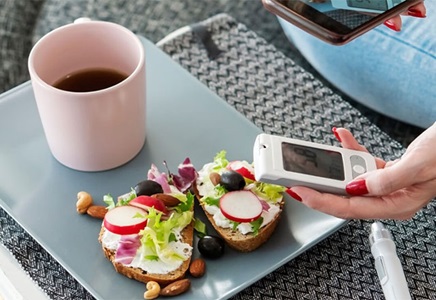How to Limit Sugary Foods and Beverages for Diabetics
Limiting sugary foods and beverages is vital for diabetics to maintain stable blood glucose levels and reduce the risk of complications.
Here’s a comprehensive guideline on how to effectively limit sugar intake.
Identify Hidden Sugars:
Read Ingredient Lists: Sugars can be listed under various names such as sucrose, high-fructose corn syrup, agave nectar, and more.
Checking the ingredients helps you avoid hidden sugars.
Check Nutrition Labels: Look for “added sugars” on nutrition labels. The lower the amount, the better.
Be vigilant about seemingly healthy foods that may contain high levels of added sugars, like flavored yogurts and granola bars.
Choose Natural Sweeteners And Limit Sugary Beverages:
Use Fruits: Opt for natural sweeteners like fruits to add sweetness to your meals and snacks.
Fruits provide vitamins, minerals, and fiber, which are beneficial for overall health.
Moderation with Honey and Maple Syrup: While natural, these sweeteners can still raise blood glucose levels.
Use them sparingly and monitor their impact on your blood sugar.
Limit Sugary Beverages:
Avoid Sodas and Juices: These drinks are high in sugars and can cause rapid spikes in blood sugar levels. Choose water, sparkling water, or unsweetened teas instead.
Minimize Specialty Coffee Drinks: Many coffee shop beverages contain large amounts of sugar.
Opt for plain coffee or coffee with a small amount of milk and no added sweeteners.
Opt for Whole Foods and Be Mindful of Portions:
Choose Whole Fruits: Whole fruits are preferable to fruit juices or dried fruits, as they have lower glycemic impact and are more filling due to their fiber content.
Eat Whole Grains: Whole grains like brown rice, quinoa, and whole oats have a slower impact on blood sugar compared to refined grains.
Cook at Home:
Control Ingredients: Cooking at home allows you to control the amount of sugar in your meals. Use herbs, spices, and citrus to enhance flavors without added sugar.
Healthy Recipes: Explore recipes specifically designed for diabetics, which often use alternative sweeteners and healthier ingredients.
Be Mindful of Portions:
Portion Control: Even foods with natural sugars or those labeled as “diabetic-friendly” can affect blood glucose levels if consumed in large quantities.
Pay attention to serving sizes.
Measure and Track: Keep a food diary to track your sugar intake and its effects on your blood sugar levels.
This can help you identify foods and portions that work best for you.
Choose Sugar-Free Alternatives, Stay Educated and Informed:
Non-Nutritive Sweeteners: Consider using sugar substitutes like stevia, erythritol, or monk fruit.
These sweeteners do not significantly affect blood glucose levels.
Sugar-Free Products: Look for sugar-free options of your favorite foods, but be cautious of other ingredients that may not be as healthy.
Stay Educated and Informed:
Continuous Learning: Stay updated with the latest recommendations and research on sugar intake for diabetics.
Join support groups or follow reliable sources for tips and recipes.
Work with a Professional: Consult with a dietitian or healthcare provider for personalized advice and strategies to manage your sugar intake effectively.
By incorporating these guidelines into your lifestyle, you can better control your blood sugar levels and promote better overall health.
Always tailor these suggestions to your individual needs and consult with healthcare professionals for personalized advice.
